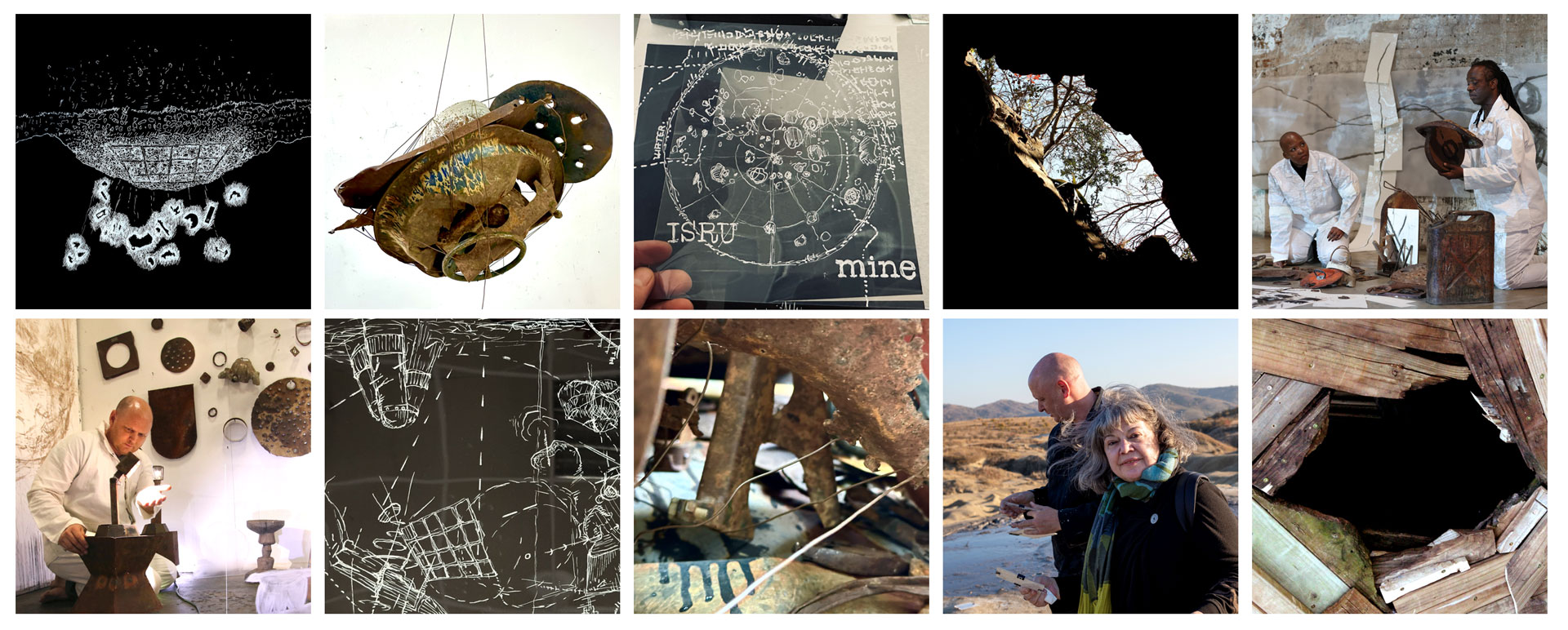
Space Shelter Earth. Of Water, Wood and Future Fossils.
SSE-V-01
If you’d like to hear about the artwork,
please find the audioguide here.
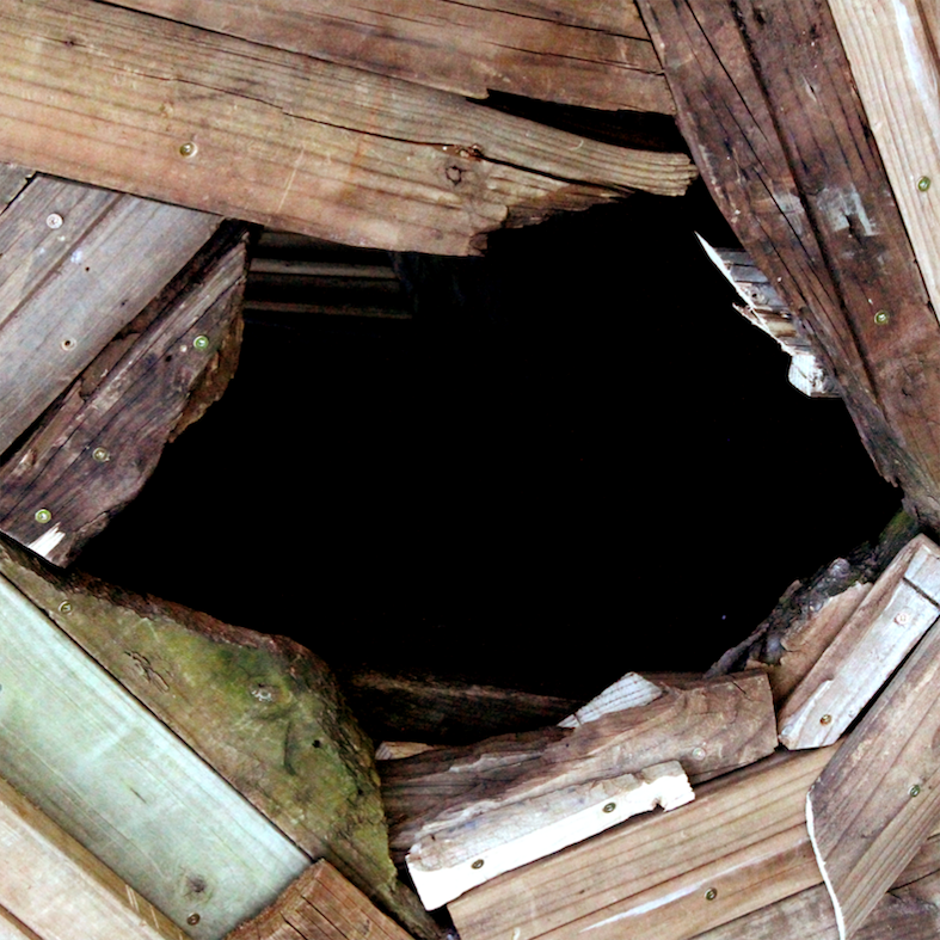
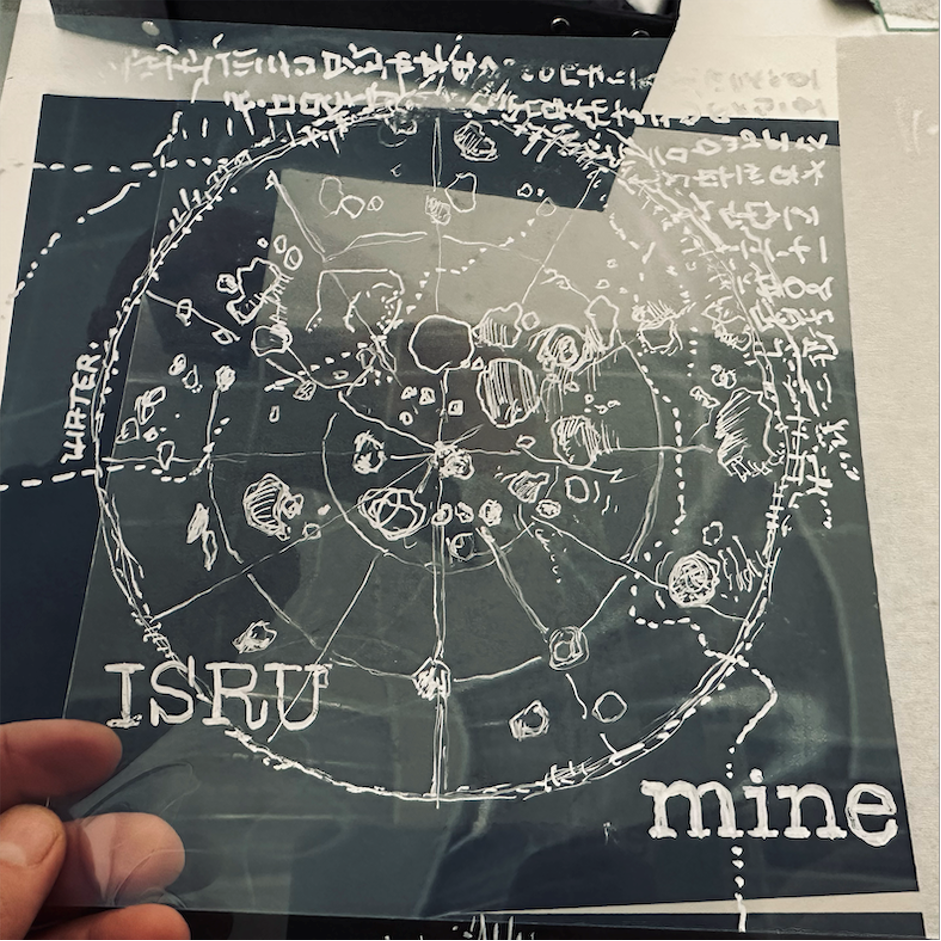
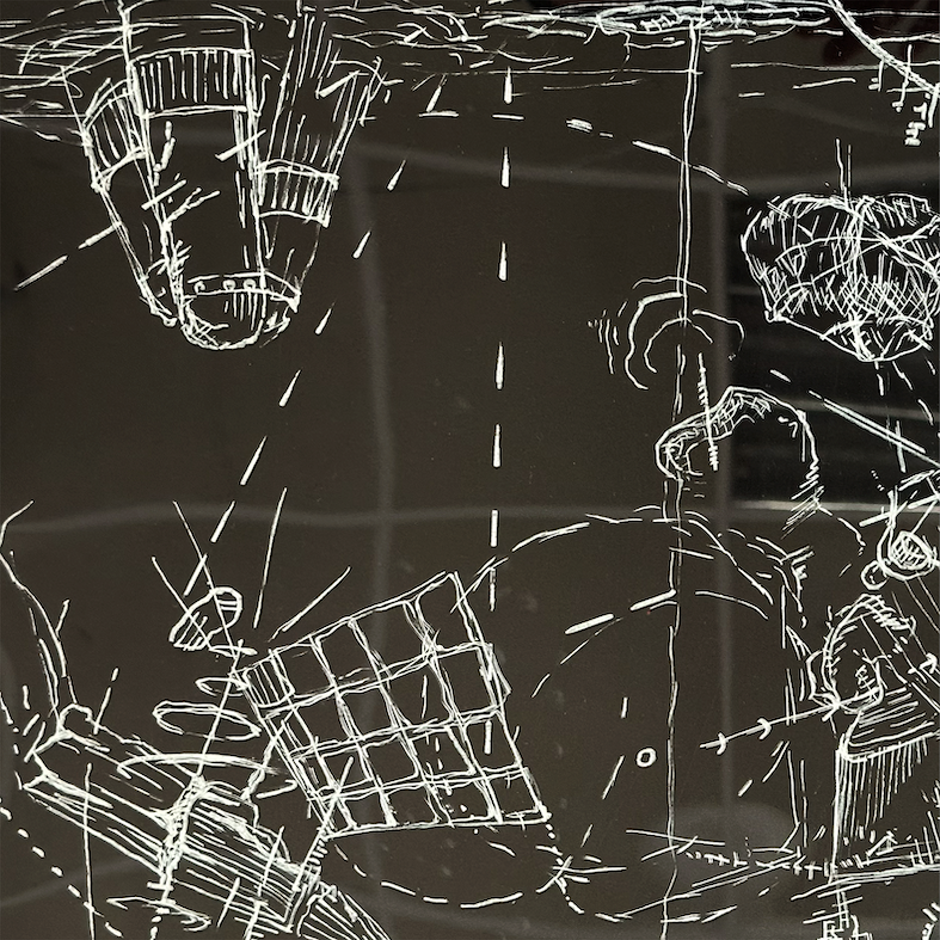
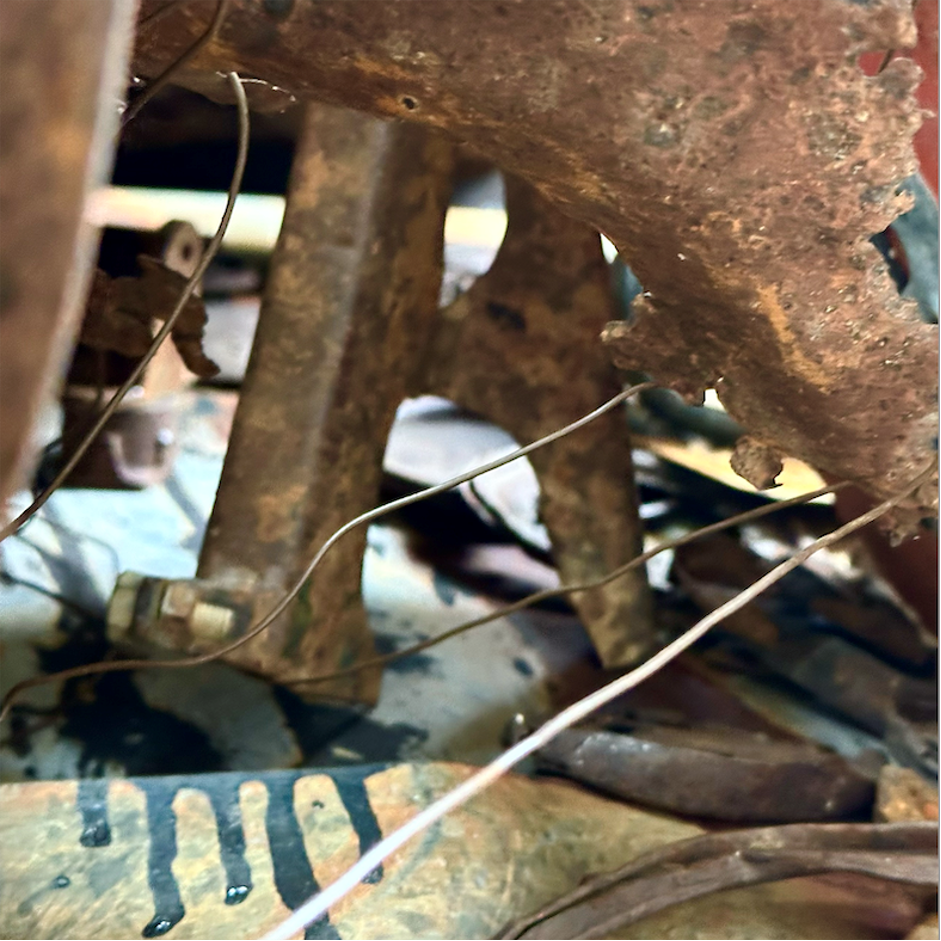
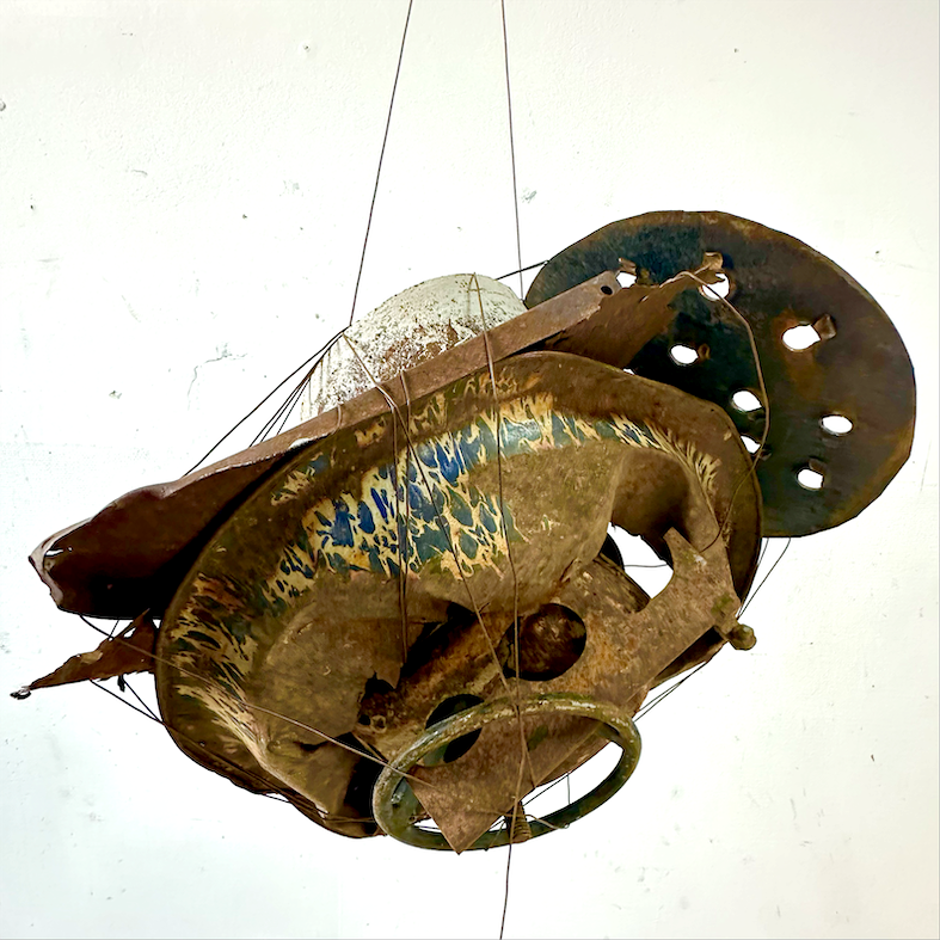
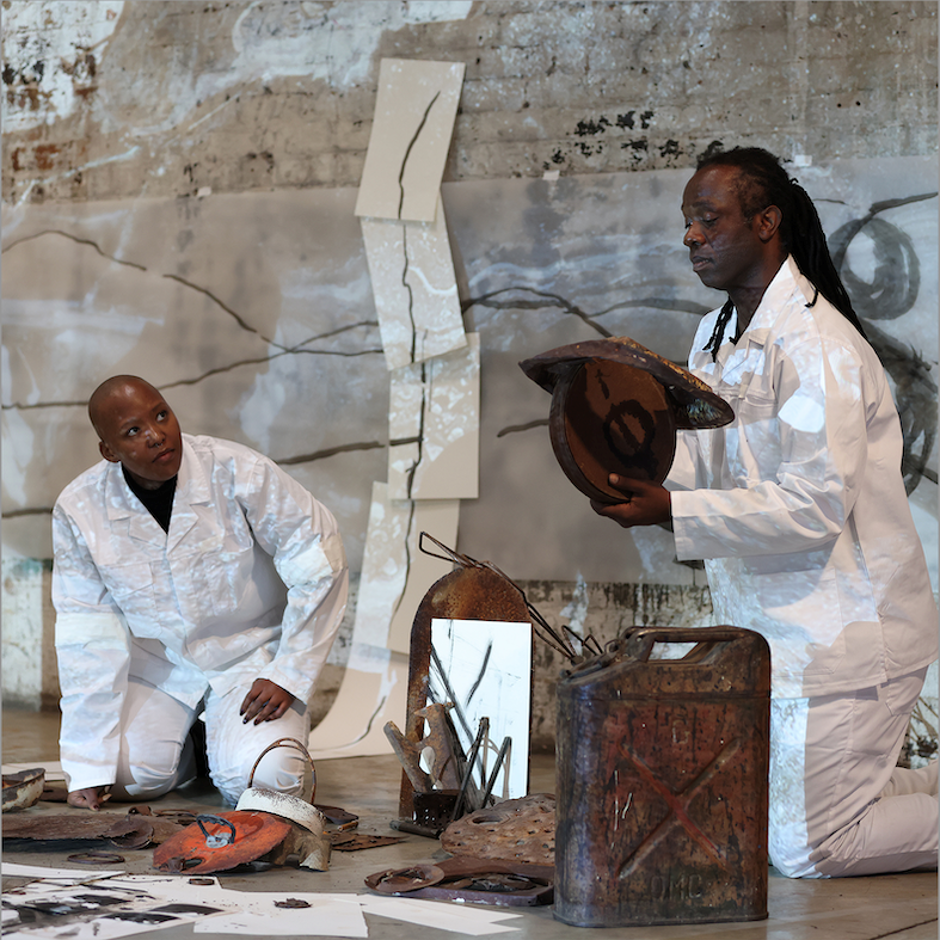
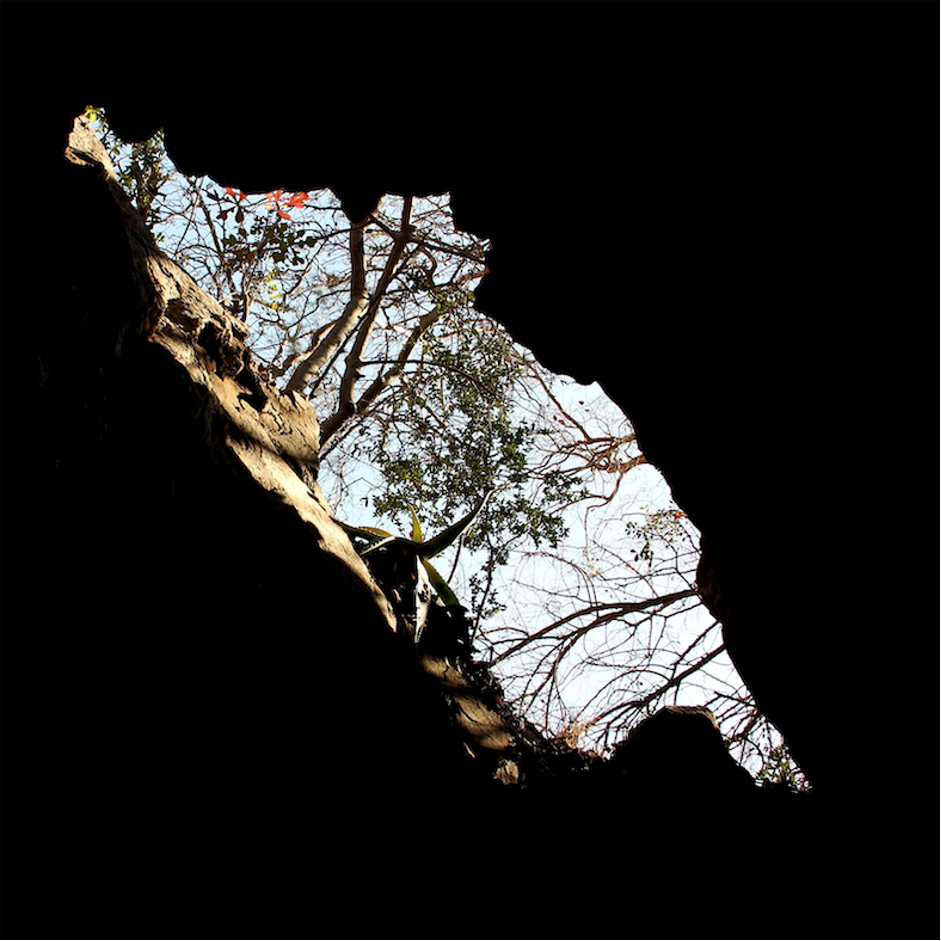
Space Shelter Earth is an imaginary, critical and poetic alternative interpretation of space stations and habitats. Conceived as an evolving and collaborative installation, partially built in situ, this first version is premiered in Venice, at the Universe Pavilion, during the Architecture Biennale. The installation, composed of three parts, one inside, one outside and on the in-between window, is alluding to water, wood, junk and debris.
The first thing one encounters on the gallery floor is a pile of rusted metal elements, some recognizable, others of uncertain origins. Once ore in the depths of the Earth before becoming shiny, useful or desirable, those objects were then discarded and turned into waste before being re-appropriated and re-used in shacks or other vulnerable economic contexts, to be again thrown away. Collected by Marcus Neustetter all over the world, they were played with in Johannesburg by Anathi Conjwa and Micca Manganye, to end up, temporarily, as a part of this artwork. These are symbols of fossils —with embedded stories— that have been exhausted from the planet, something that could spread elsewhere in the space mining desire. As evidence of our civilisation, they allude to the future fossils of the space habitats and the current space debris and junk in orbit, on the Moon and other celestial bodies where they are now being turned into human archeological and cultural heritage. Fossils from the past and from the future, they become the shelters of our thoughts.
Outside, in the courtyard, as a counterpoint, is a construction built in collaboration with Stefano Matteazzi, a Venetian craftsman, from remains of pieces of wood found locally. In-Situ Resource Utilization or ISRU is the space community’s term for using the resources found in space. Space Shelter Earth intends to avoid traveling huge and heavy installations, nothing more than what fits, as a symbol, into a 23 kg suitcase. The chosen approach is to create, as much as possible, the work locally, in situ, but by recycling local material. This wooden structure is also meant to be a tribute to the invisible forest above which Venice is built, a forest that never rots, deep into the water. Water is mandatory for life as we know it. It is a resource, on Earth as in Space where it could also be the basis for propellant by mining the ice on the Moon or Mars. In Venice, water has been protective but has now become a threat as well, and it is obviously threatened in many places. What would a water shelter be? How would you shelter water?
In-between the inside and the outside parts of the installation is a huge window, divided into many little squares, reminiscent of an archeological grid at excavation sites, acting both as a connector and a fence. It carries drawings and words, ideas and quotations, mental maps and cartographies of unknown territories, research and deep primal emotions, framed by the outline of the South African cave in the Cradle of Humankind, like a portal linking the future and the past, Earth and Space.
Space Shelter Earth-V-01 plays with the inside and the outside, the below and the above, asking what/whom are we sheltering and what from.
Images: Sketches towards Space Shelter Earth. Of Water, Wood and Future Fossils. SSE-V-01, 2025
(photos by Marcus Neustetter, Zivanai Matangi, Andrei Tudose)
Shelters of rusted debris from across the globe; Caves and wooden installations at the Cradle of Humankind; Earth samples at mud volcanoes in Romania; Johannesburg studio experiments with Anathi Conjwa and Micca Manganye; Speculative space drawings.
About the artist and space art expert
Marcus Neustetter (born 1976, Johannesburg) earned his undergraduate and Masters Degree in Fine Arts (2001) from the University of the Witwatersrand, South Africa. Interested in cross-disciplinary practice, site-specificity, socially engaged interventions and the intersection of art and activism, Neustetter has produced artworks, projects, performances and installations across Africa, Europe, America and Asia. Searching for a balance between poetic form and asking critical questions, his media fluctuates in response to concept and context. As artistic director, facilitator, researcher and strategist to various creative industry areas, he finds himself building opportunities and networks that develop interest beyond his personal artistic practice mainly through his 20 year collaboration The Trinity Session. Neustetter is an adjunct professor with the Nelson Mandela University and currently moves between his studios in Johannesburg and Vienna.
Projects, exhibitions and accolades include: Artist in Research Fellow for the Smithsonian National Museums of African Art and Air and Space, Washington DC, USA; Into the Light, solo exhibition at the Wits Art Museum, Johannesburg, South Africa; Sud Triennial 2014 /2017 invited artist, Douala, Cameroon; Sutherland Reflections, art-science project with the South African Astronomical Observatory and Southern African Large Telescope; Imaginary Futures, commissioned planetarium show Bloemfontein, South Africa, and online networked performances; Artistic director of ISEA2018 Durban (International Symposium of Electronic Art); Lead the Way Again artwork for the ISS (2022) and the Moon (2024) with the Moon Gallery.
Annick Bureaud is an art critic and independent curator in the field of art and technosciences. She has written numerous articles and contributes to the French contemporary art magazine art press. She has organized symposia, conferences and workshops including “Visibility – Legibility of Space Art. Art and zero gravity: the experience of parabolic flights”, a collaborative project between Leonardo/Olats and the International Festival @rt Outsiders, Paris, 2003. In 2009, she was co-curator of the exhibition “(Un)Inhabitable. The Art of Extreme Environments”, Festival @rt Outsiders, MEP/European House of Photography, Paris. In 2018, she was the guest curator of “Mending the Fabric of the World” for the Bandits-Mages Festival in Bourges. In 2019, she is the editor-curator of the exhibition and the hypertext video capsule of the work Neotenous Dark Dwellers – Lygophilia by Robertina Šebjanič. In 2020, she launched “The Traveling Plant” project. In 2023, she initiated the Space Shelter Earth project with artist Marcus Neustetter and is one of the co-founders of the Venus Conversations 2024-2034 project initiated by artist Lily Hibberd. She has been the director of Leonardo/Olats for over 25 years and as such lead the association’s Space Art Science and More-than-Planet projects.
Credits
.
Space Shelter Earth project by Marcus Neustetter x Annick Bureaud
Space Shelter Earth. Of Water, Wood and Future Fossils. SSE-V-01, 2025
Creation by Marcus Neustetter, in collaboration with Stefano Matteazzi in Venice;
Performance recorded in Johannesburg with Anathi Conjwa and Micca Manganye with live projection by Ciara Struwig, sound engineering Zain Vally and documentation Zivanai Matangi.
Concept and project in dialogue with Annick Bureaud
Venice curator: Claudia Schnugg
This project has received support from the Austrian Cultural Forum Milan to be produced for this exhibition.

